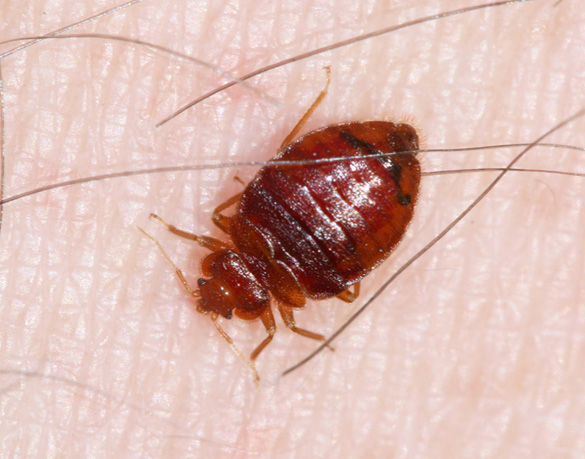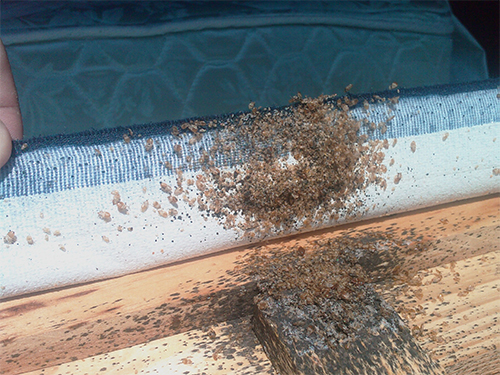Get Educated About the Kinds of Pest Control Methods and Their Benefits for Home Owners
Understanding the numerous bug control methods readily available to property owners is important for effective insect monitoring. From chemical and biological approaches to cultural and mechanical methods, each technique presents one-of-a-kind benefits that can significantly affect both wellness and environmental safety and security. House owners who are knowledgeable can make critical options that not only address bug concerns yet also enhance the overall high quality of their living atmosphere. As we explore these approaches additionally, it becomes clear that the decision-making procedure entails even more than simply instant results; it touches on lasting sustainability and health. What variables should influence these important decisions?
Chemical Bug Control Approaches
Chemical insect control methods are a critical element of integrated bug administration methods for house owners looking for effective options to pest problems. These approaches include the application of chemical materials designed to remove or discourage insects that endanger individual residential or commercial property, wellness, and convenience. Usual chemicals used consist of pesticides, herbicides, rodenticides, and fungicides, each tailored to target certain parasites.
The key advantage of chemical pest control is its fast effectiveness; many formulas supply immediate outcomes, minimizing pest populaces considerably in a brief time. In addition, advances in chemical formulations have actually caused items that are more eco-friendly and have reduced toxicity degrees for non-target organisms when used properly.

Biological Insect Control Techniques
All-natural insect control methods have actually acquired prestige as house owners seek much safer and much more sustainable alternatives to typical chemical techniques. Biological pest control strategies utilize all-natural killers, bloodsuckers, or virus to handle pest populaces properly. This technique is not just eco-friendly but also lessens the risk of harm to non-target types, including useful bugs and wildlife.
One of one of the most common organic control techniques entails introducing all-natural killers into the setting. As an example, ladybugs can be used to manage aphid populations, while nematodes target soil-dwelling bugs like grubs. Furthermore, parasitoids-- organisms that reside on or within a host-- can be used to regulate details bug varieties by laying eggs inside them, ultimately leading to their death.
Another strategy is making use of biopesticides, which are originated from natural materials such as plants, minerals, or bacteria (bed bug exterminator). These items can successfully target parasites while posing minimal risk to pet dogs and human beings. Generally, biological parasite control methods give home owners with an efficient means of pest administration that aligns with ecological concepts, advertising a much healthier living atmosphere while minimizing dependence on artificial chemicals
Mechanical Parasite Control Approaches
Mechanical pest control strategies include a range of techniques that physically protect against or get rid of insects without making use of chemicals. These methods are especially beneficial for house owners seeking environmentally friendly choices while ensuring use this link the security of their space.
One usual technique is using barriers, such as screens, nets, and catches, which prevent insects from getting in homes or specific locations. Mounting home window displays can efficiently maintain pests out, while utilizing physical obstacles around yards can discourage larger bugs like bunnies or deer. Additionally, mechanical catches made for rodents can record and get rid of these bugs without the need for harmful substances.
An additional reliable technique entails the use of mops and vacuums to get rid of bugs directly from surfaces. Regular cleaning and maintenance can considerably reduce insect populaces by eliminating food resources and hiding areas. Utilizing tools like ultrasonic pest repellents can prevent different parasites with audio waves that are unpleasant to them but inaudible to humans.
Cultural Parasite Control Practices
Cultural insect control techniques concentrate on customizing the atmosphere and management methods to produce conditions that are much less favorable to pest invasions. These methods are fundamental in maintaining a well balanced ecosystem and minimizing the dependence on chemical treatments. By altering agricultural techniques, house owners can successfully prevent insects while promoting plant health.
One typical approach consists of crop rotation, which interrupts the life cycles of pests by changing the sorts of plants expanded in a specific area (bed bug exterminator). This not just minimizes pest populations however additionally improves dirt health. Additionally, intercropping-- growing diverse plants in distance-- can confuse bugs and reduce their capacity to find their recommended host plants
Water administration is another important element of cultural methods. Proper watering methods can stop standing water, which serves as a reproduction ground for insects and other parasites. Maintaining tidiness in and around the home, such as on a regular basis eliminating particles and food waste, can significantly decrease insect tourist attraction.
Incorporating these cultural methods right into a comprehensive bug management method permits homeowners to create an environment that normally discourages parasites, consequently improving the performance of other control techniques while advertising lasting horticulture and pop over to these guys landscape design.

Integrated Pest Monitoring Approaches
Integrated Parasite Administration (IPM) represents an all natural method that integrates various strategies to efficiently take care of bug populations while lessening environmental impact. This methodology integrates organic, cultural, physical, and chemical methods to attain lasting parasite control. By examining pest populations and their all-natural adversaries, IPM highlights monitoring and recognizing parasites before implementing control measures.
One of the core principles of IPM is making use of thresholds, which establish the level of insect activity that requires treatment. This ensures that therapies are applied just when necessary, lowering the dependence on chemical pesticides. Organic control approaches, such as presenting natural killers or parasites, operate in conjunction with cultural methods like crop try this website rotation and environment manipulation to interfere with pest life process.
Moreover, IPM motivates making use of least-toxic chemical choices when treatment is required, prioritizing products that present minimal danger to non-target microorganisms and the atmosphere. For homeowners, adopting IPM approaches not just enhances the effectiveness of pest management but likewise promotes a healthier living atmosphere, fostering biodiversity and decreasing chemical exposure. Ultimately, IPM encourages house owners to make educated choices that stabilize bug control with environmental duty.
Verdict
In conclusion, comprehending the various parasite control methods empowers home owners to make educated decisions regarding pest monitoring. Each technique-- chemical, biological, mechanical, cultural, and integrated insect management-- provides unique advantages that cater to different demands and choices.
Comprehending the numerous parasite control techniques offered to house owners is necessary for effective insect management.Chemical pest control techniques are a vital element of incorporated insect administration approaches for home owners looking for effective options to pest invasions. In general, biological bug control methods offer house owners with a reliable means of insect monitoring that lines up with eco-friendly concepts, advertising a much healthier living setting while lowering dependence on artificial chemicals.
Social pest control practices focus on modifying the atmosphere and administration strategies to develop problems that are much less helpful to pest invasions.In final thought, understanding the various bug control techniques empowers homeowners to make enlightened decisions relating to pest administration.